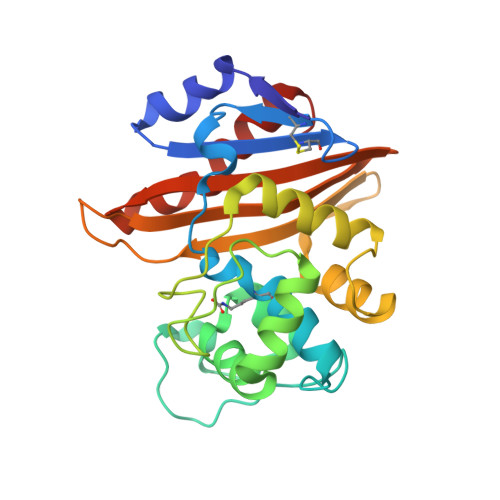Cyclobutanone Analogues of beta-Lactams Revisited: Insights into Conformational Requirements for Inhibition of Serine- and Metallo-beta-Lactamases.
Johnson, J.W., Gretes, M., Goodfellow, V.J., Marrone, L., Heynen, M.L., Strynadka, N.C., Dmitrienko, G.I.(2010) J Am Chem Soc 132: 2558-2560
- PubMed: 20141132
- DOI: https://doi.org/10.1021/ja9086374
- Primary Citation of Related Structures:
3LCE - PubMed Abstract:
The most important mode of bacterial resistance to beta-lactam antibiotics is the expression of beta-lactamases. New cyclobutanone analogues of penams and penems have been prepared and evaluated for inhibition of class A, B, C, and D beta-lactamases. Inhibitors which favor conformations in which the C4 carboxylate is equatorial were found to be more potent than those in which the carboxylate is axial, and molecular modeling studies with enzyme-inhibitor complexes indicate that an equatorial orientation of the carboxylate is required for binding to beta-lactamases. An X-ray structure of OXA-10 complexed with a cyclobutanone confirms that a serine hemiketal is formed in the active site and that the inhibitor adopts the exo envelope. An unsaturated penem analogue was also found to enhance the potency of meropenem against carbapenem-resistant MBL-producing strains of Chryseobacterium meningosepticum and Stenotrophomonas maltophilia. These cyclobutanones represent the first type of reversible inhibitors to show moderate (low micromolar) inhibition of both serine- and metallo-beta-lactamases and should be considered for further development into practical inhibitors.
Organizational Affiliation:
Department of Chemistry, University of Waterloo, 200 University Avenue West, Waterloo, Ontario, Canada N2L 3G1.


















